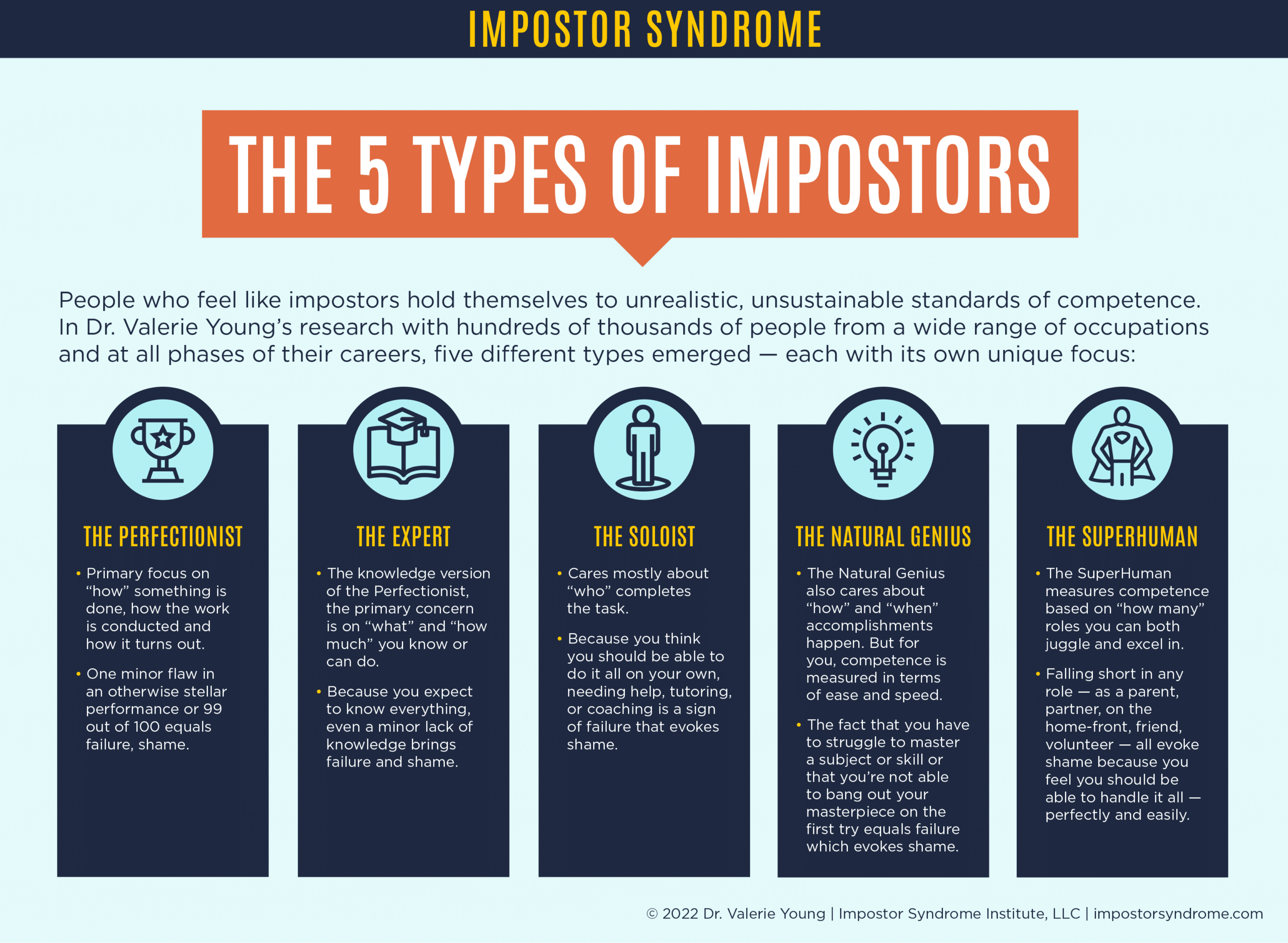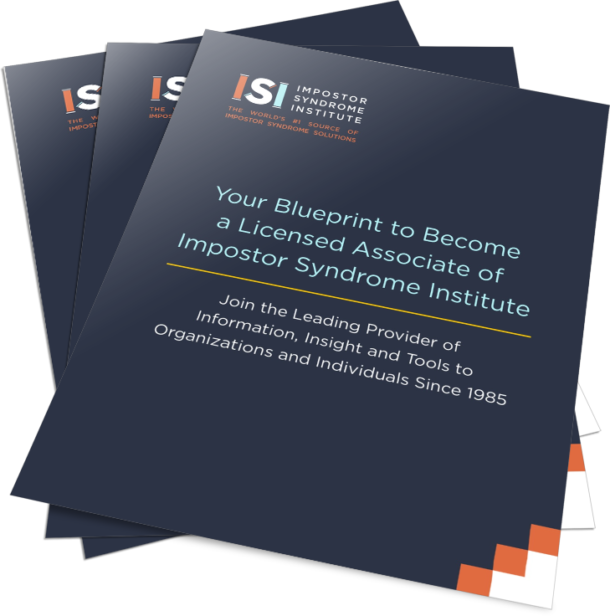
82% Of People Experience Impostor Syndrome — That Includes Your Coaching Clients — Here’s How You Can Help Them Overcome It In Just 3 Steps:
If you’re frustrated with impostor syndrome strategies that do little to truly help your clients… try my research-backed ISIC Framework.
In 2021, the American Psychological Association reported that up to 82% of people experience impostor syndrome (IS).
So it doesn’t surprise me one bit that an increasing number of coaches are seeking out IS information — 90% of coaches I’ve worked with have said that their top priority is to help clients free themselves from impostor syndrome.
Practical, evidence-based IS strategies are an absolutely vital tool for a coach to have at their disposal. Because when they don’t, it affects their clients, their business, and themselves:

It’s a vicious cycle that has major ramifications for the client, the coach, and their business.
But breaking this cycle is much simpler than it seems…
I’ve condensed my 40+ years of IS research and “in the trenches” experience into a 3-step framework that has allowed over 80 coaches to break the cycle for themselves. Let me explain how…
“…Practical hands-on tools you can start using tomorrow to support your coaching clients.”
Very thorough
Not only do you gain better insight into impostor syndrome but you are provided with practical hands on tools you can start using tomorrow to support your coaching clients. Loved everything about the training.
Heather Thomson, Executive and Leadership Coach, Canada

“…A holistic view of Impostor Syndrome and actionable strategies to tackle it…”

A must-attend
The program combines theoretical knowledge, evidence-based strategies, and hands-on practical tools to give participants a well-rounded understanding. Not only do you get to delve deep into recognizing and addressing feelings of inadequacy in professional settings, but with Dr. Young’s guidance, it feels particularly enlightening. If you’re seeking both a holistic view of impostor syndrome and actionable strategies to tackle it, this training, especially with Dr. Young’s contributions, is a must-attend.
Terri Williams, Executive and Leadership Coach, Virginia
“…A practical framework… to help people rethink their impostor feelings.”
A practical framework and loads of tools
It’s a very high level training that both gives you all the scientific knowledge you need as a coach to understand impostor phenomenon, and a practical framework and loads of tools and opportunities for experimenting to help people to rethink their impostor feelings.
Robin Keeris, Coach/Facilitator, The Netherlands

With the ISIC Framework, coaches gain:
A deeper understanding of impostor syndrome
An ability to distinguish IS from normal performance anxiety and low self-esteem
An understanding of the potential external sources of impostor syndrome
Insight into their own impostor fears and how it may affect their practice
A range of practical tools they can use to help their clients overcome impostor thinking
The confidence to use those tools effectively
Not because of some feel-good sentiments from a self-help guru… and not because of an IS “hack” they saw on TikTok…
But ALL because of a simple 3-step research-based framework that educates coaches on effective IS management, so their clients (and they) can finally see themselves as the bright, capable people they really are.
The ISIC Framework solves 3 big problems for coaches who want to help their clients overcome impostor syndrome:
“I don’t know how to help my clients with IS beyond giving generic advice”
Does your lack of understanding surrounding IS lead you to give generic advice like… make a list of your accomplishments or tame your inner critic by giving it a name? Do you find your usually reliable coaching tactics don’t get the same results when it comes to IS?
The Solution:
A solid framework that gives you the tools to provide your clients with specific, personalized assistance. The ISIC Framework gives you a suite of options to help ALL of your clients — no matter their circumstances.
"I have a general understanding of impostor syndrome but I don’t have any IS-specific training or tools — I don’t know if I’m helping or harming my clients.”
Do you struggle to pinpoint whether what your clients are dealing with is actually IS, or something similar (like low self-esteem or culturally-based humility)? Have you considered that this confusion means your advice is making matters worse for your clients?
The Solution:
A framework that digs deep into IS as its own entity, separate from other potential issues. The ISIC Framework was created specifically for impostor syndrome. It allows coaches to accurately identify impostor syndrome in their clients, and act accordingly.
“How can I help my clients struggling with IS when I can’t even overcome it myself?”
Have you experienced impostor syndrome yourself? Do you feel like it impacts your ability to help your clients effectively? Or to attract clients in the first place?
The Solution:
A framework that allows you to help yourself while you help others. My students consistently report that, even though they joined my training to help others, the ISIC Framework has actually given them the tools to overcome IS for themselves.
Many coaches have tried other IS solutions before — but they’ve been unsuccessful. Here’s why:
In 1983, I used the findings of my doctoral research on internal barriers to women’s occupational achievement to create the first educational solution to IS.
Since then, I’ve led trainings for half a million people around the world — including at over 100 universities in the US, Canada, Europe, the UK, and Japan and such diverse organizations as Google, Pfizer, JP Morgan, NASA, the National Cancer Institute — even senior leaders at the National Basketball Association.
As you can imagine, I’ve seen plenty of IS advice thrown around.
But most of it is completely ineffective. At times, it just makes the problem worse.
You’ll often see people suggest exercises and actions such as:
Tell your client to list their accomplishments.
Although well-intentioned, this exercise rarely helps. And I know it’s counterintuitive, but shining a light on your client’s successes can actually contribute to impostor feelings.
Give your client a pep talk.
f the solution was this easy, IS would’ve been resolved a looong time ago. Reminding your clients of how great they are may feel good in the moment — but when it comes to curing impostor syndrome, it has not been found to have a lasting effect.
Encourage your client to name or befriend their “inner critic.”
Again, I get the appeal. But these tactics don’t touch the core issue, making IS that much harder to overcome.
After 4 decades of impostor syndrome research, training, and hands-on experience with HUNDREDS OF THOUSANDS of people around the world, this is what I’ve found ACTUALLY works: The ISIC Framework

This is the EXACT 3-step framework that I teach coaches (and have already given to coaches in 22 countries) through my Impostor Syndrome-Informed Coach™ training program.
Step One: Normalize Impostor Syndrome By Contextualizing More, And Personalizing Less.

Chipping away at the stigma surrounding impostor syndrome is the first barrier you must overcome with your clients. Recognizing that these feelings are more common than not has led to major breakthroughs for many of my students.
My approach to normalizing impostor feelings is to contextualize MORE, and personalize LESS. This happens with two main actions:
1. Break the silence — but don’t get stuck there.
Impostor syndrome thrives in the dark. Shining a light on it makes it far less intimidating to handle.
But, as you’ll see, there are some pivotal nuances that you must consider with this step.
- Encourage your clients to speak more openly about their impostor feelings.
Initiate conversations with your clients about IS (but be sure not to diagnose them). Giving them space to open up about their impostor feelings is often a significant lightbulb moment for people.
However, it’s vital that you strike the right balance here, for two reasons:
First, talk does not equal action. My friends and I sometimes sit around and talk about how fat we feel… but we never feel any thinner as a result. Simply talking about IS won’t make it go away.
Second, it’s very easy to go completely the other way by encouraging your clients to lean into their impostor feelings, which can trigger rumination — something known to lead to even worse outcomes for them.
- Show them that they are not alone in their impostor feelings.
Plenty of intelligent, successful people struggle with IS. Michelle Obama, for example, has spoken very candidly about her experience with impostor feelings (I wrote an article on this back in 2019).
Point your clients towards these successful, competent people as an example that these feelings are not exclusive to them, and do not accurately reflect their abilities.
Though, even here, I guarantee there will be clients who think, “Sure, they say they’re an impostor, but I really AM one…”
This is exactly why you should not dwell on this step. It’s a valuable point to make, but definitely not the groundbreaking, life-changing conversation that many frame it to be.
2. Consider the source.
There are over a thousand empirical studies on what psychologists refer to as the impostor phenomenon. (If you’re concerned about the widespread use of the term “syndrome” you can learn more here)
Little wonder, impostor syndrome has been over-psychologized. Failure to understand external contributors puts the entire focus on fixing ourselves.
In reality, there are numerous external factors that contribute to IS:
- Societal stereotypes of gender, race, disability, socioeconomic background, etc: Knowing that the world expects you to under-perform is a big trigger for impostor feelings. It causes us to doubt our abilities, and can even become a self-fulfilling prophecy.
- Messaging and expectations from family: From perfectionist thinking to a lack of praise, even the most well-intentioned parents can set their child up to experience impostor feelings throughout their life.
- Lack of diversity in workplaces and institutions: Being one of the few, the only, or the first person of color, woman, non-Native speaker, etc., in the room can come with a crushing pressure to represent your ENTIRE group. This underrepresentation also makes many question whether they belong there.
- Occupation or organizational culture: Many fields that we deem to be “high-achieving” (such as medicine) are rampant with IS. We also see this in situations like being a student, or the isolation of working alone (as a coach, you can probably relate).
Showing your clients that IS is a perfectly understandable response to their situation will help them shift from blaming themselves, to having compassion and understanding of their impostor feelings.
Contextualizing reduces the initial pressure to resolve what is often viewed entirely as a personal problem.
Though, as outlined above, impostor syndrome is not solely a function of sexism, racism, or other forms of oppression, contextualizing is a particularly significant step for your clients who are part of marginalized groups.
It interrupts the false belief that “If I were truly competent, I wouldn’t be unnerved being the only black medical student, one of the few female coders, or the first blind VP.” The core message is that you can be perfectly competent and still experience normal stress in these situations.
Step Two: Reframe The Individual And Collective Notion Of Competence

With impostor syndrome, feelings are often the last aspect that will change. And they’re the part of IS that we have the least direct control over.
But we do have a good amount of control over something else that acts like a lever for our feelings — our thoughts.
See, the only way to stop feeling like an impostor is to stop thinking like one. Because the only difference between people who do experience IS and those who don’t, is in the exact same situation where your client feels like an impostor, they are thinking different thoughts.
Now, many people think that the opposite of impostor thinking is arrogance. But that’s absolutely not the case — people who don’t experience IS are still humble. Their thoughts are just more grounded in the reality of their strengths (and just as importantly, their human limitations).
That’s because they have a fundamentally different understanding of competence.
Most coaches are familiar with what are known as cognitive distortions. It’s a fancy way of describing when your client engages in things like all-or-nothing thinking, personalizing (“it must be me”), explaining away positives (externalizing), and “shoulding.”
Four decades ago, I made the key connection between impostor syndrome and cognitive distortions — specifically, in relation to competence. I call them “competence distortions”.
Competence distortions refer to the idealistic and unsustainable ways we judge our intellect and performance. Failure to consistently attain our unrealistic notions of competence confirms we are “impostors.”
These competence distortions show up in what have popularly been referred to as “the five types of impostor syndrome.”
These types describe five unique ways people with impostor syndrome misunderstand what it means to be competent. They are the result of a thematic analysis I conducted with literally tens of thousands of workshop participants.

The solution to helping the client unlearn impostor syndrome (no matter which of the five types they are) is to empower them to become what I refer to as a Humble Realist™.
The Humble Realist™:
- Has a realistic understanding of what it means to be competent: they don’t expect all-knowing, unaided, perfection with ease.
- They think (and therefore, respond) differently to:
- FAILURE — they see it as an opportunity to grow
- MISTAKES — they see them as lessons to learn from
- CONSTRUCTIVE CRITICISM — they see the ‘constructive’ more than the ‘criticism’
- They don’t expect themselves to feel confident 24/7: instead of beating themselves up with the belief that “If I were really competent, I’d feel confident right now,” they allow normal performance anxiety to wash over them
So, how do you empower your clients to reframe, and think like Humble Realists™? It takes conscious effort. They need to:
- Notice and recognize when they are having a normal impostor moment,
- Hit the pause button,
- Become aware of the conversation in their head,
- Imagine how a Humble Realist™ would think differently in this situation,
- Then ACT LIKE YOU BELIEVE THE NEW THOUGHTS!
Step Three: Keep Going, Regardless Of Internal Confidence Or External Realities

The final ISIC step is to keep going, regardless. This concept applies to IS on both an internal, AND external level:
- Keep going, regardless of… INTERNAL CONFIDENCE.
Help your client prioritize slow, steady progress over instant change. It’s important to understand that impostor feelings don’t go away overnight. And that’s okay.
They are normal and common, and they will pop up from time to time. The end goal is not necessarily to never feel like an impostor again (although that’s entirely possible) — it’s to turn an impostor life into an impostor moment.
It’s about having the insight, information, and tools to be able to talk yourself down off the impostor syndrome ledge faster.
Remind your clients that IS doesn’t need to put their goals on hold. They don’t need to wait for the feelings to go away before they can keep moving.
- Keep going, regardless of… EXTERNAL FACTORS.
Family expectations and societal pressure aren’t going to magically disappear. Neither is the fact that your client is in a competitive degree program or in a workplace culture that fuels self-doubt.
It’s important to acknowledge that these outside factors exist and validate how they make our clients feel. But ultimately, we need to help them accept that they don’t have control over them.
But what they can control is how they respond and react.
The biggest tool you can pass on to your client (for both internal and external IS factors) is to act as if they are already a Humble Realist™.
A key point I must make here is that “act as if” is VERY different from “fake it ’til you make it”:

To summarize… helping your clients manage and overcome their impostor syndrome is as easy as:
- NORMALIZE impostor thoughts and feelings by contextualizing more, and personalizing less.
- REFRAME your clients thoughts to think (and react) like a Humble RealistTM.
- KEEP GOING, REGARDLESS of whether impostor thoughts and external pressures are gone.
Here are a few reasons why The ISIC Framework works:
It gives coaches confidence.
ISIC pulls back the curtain on IS, and shows that it’s not the intractable problem you thought. Pair that with some simple yet powerful strategies, and suddenly, the prospect of helping your clients overcome IS feels less like a mountain and more like a hill.
It reveals how IS plays out practically.
This allows you to better identify unconscious (and costly) behaviors in your clients that are known to be associated with IS. You’ll have a better understanding of when to step in, and, more importantly, how.
It gives you concrete tools.
Anyone can read my book and learn something, but that doesn’t always translate into actionability. ISIC offers tangible, immediately usable tools to help your clients NOW.
But don’t just take it from me — this is what some of my past students have to say about the ISIC Framework and training:
Note: These are just a FRACTION of DOZENS of results… my team and I have taken nearly 100 coaches from 22 countries and cultures through the ISIC Framework. Every single one of them has left with the confidence that they can now easily help their clients overcome IS, and get better results from their coaching.
If you’d like to learn from the global thought leader on impostor syndrome…
And if you want the framework and tools to confidently help your clients overcome IS, and ensure they can get the most out of your coaching… you have two options:
Option 1
You could simply take the ISIC Framework, and try to translate this knowledge into your coaching yourself.
I’ll be honest — simply having these three steps in your toolkit is going to be a major leg up from where you were before you read this. This framework is lightyears ahead of the IS advice floating around online.
BUT it’s difficult and time-consuming to figure out how to turn this new knowledge into tangible action, without expert guidance.
Option 2
Join my on-demand training program, and become an Impostor Syndrome-Informed CoachTM.
Here’s what you can expect when you register for ISIC Coach Training:
✅ A proven framework to coach clients through impostor syndrome that’s been applied in Fortune 500 companies, global leadership programs, and real-world coaching environments worldwide.
✅ Practical, ready-to-use tools that create real-time breakthroughs in your sessions.
✅ A powerful method that keeps you within the ethical boundaries of coaching (without crossing into therapy.)
✅ The tools and confidence to help your clients finally break free from impostor syndrome for good.
Ready to become an Impostor Syndrome-Informed CoachTM?
Click the button below to register now!

VALERIE YOUNG is co-founder of Impostor Syndrome Institute. An internationally recognized thought leader for four decades, she has delivered her Rethinking Impostor Syndrome™ program to over half a million people at such diverse organizations as Pfizer, Google, NASA, Harvard, Stanford, and Oxford. Valerie earned her doctoral degree from the University of Massachusetts, Amherst, where she was helped found the Social Justice Education program, a forerunner to today’s DE&I training. Although her early research focused on professional women—over half of whom were women of color—much of the original findings have proven applicable to anyone with impostor feelings. Her book has been reprinted in seven languages.
